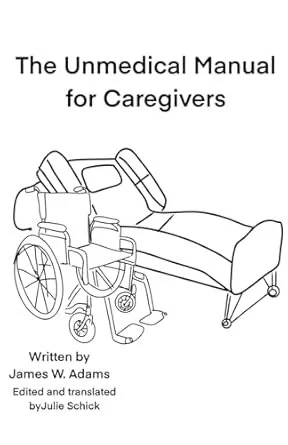10 Essential Safety Tips for Caring for Someone with a Traumatic Brain Injury (TBI)
Caring for someone with a traumatic brain injury (TBI) is one of the most challenging roles a caregiver may take on. Every injury is unique, and recovery looks different for everyone. While there’s no “one-size-fits-all” approach, one thing remains universal: safety is the cornerstone of daily life after a TBI.
Simple activities—like standing up, eating a meal, or moving around the house—can present risks if precautions aren’t in place. The good news is that caregivers can take practical, everyday steps to create a safer environment without needing medical training.
Here are 10 essential safety tips that unpaid, at-home caregivers can start using right away.
1. Prevent Falls with Home Adjustments
After a TBI, balance and coordination are often affected, making falls a major concern. A few simple home changes can make a world of difference:
Install grab bars in the bathroom and near stairs.
Use non-slip mats in showers and on slippery floors.
Rearrange furniture to create clear, wide walkways.
Consider mobility aids like canes, walkers, or wheelchairs if needed.
👉 Affiliate Tip: Affordable grab bars, non-slip mats, and mobility aids are widely available online and can be installed without major renovations.
2. Encourage Slow, Steady Movements
Impulsiveness, dizziness, and fatigue are common after a TBI. Encourage your loved one to:
Move slowly when standing, sitting, or walking.
Pause before changing direction.
Accept support when needed (holding your arm or using a cane).
Patience here isn’t just about kindness—it’s a big part of safety.
3. Create a Ground-Floor Living Space
If stairs are difficult, setting up a bedroom and living area on the main floor can reduce risks.
Keep essentials within reach.
If stairs can’t be avoided, add railings on both sides for support.
4. Make Mealtime Safer
Eating can present safety concerns after a TBI, especially if swallowing is difficult or impulsive behavior is an issue. To help:
Offer adaptive utensils with easy-grip handles.
Encourage small bites and sips.
Supervise meals to prevent choking.
5. Be Prepared for Seizures
Some TBI survivors are at higher risk for seizures. While only a provider can determine treatment, caregivers can:
Avoid leaving them alone in risky situations (like bathing).
Learn basic seizure first aid.
Ask their provider about protective strategies if needed.
6. Reduce Sensory Overload
Many TBI survivors become sensitive to noise, light, or busy environments. To help create calm:
Use soft lighting instead of harsh overhead bulbs.
Limit background noise (turn off TV or music during tasks).
Keep visits short and manageable.
👉 Affiliate Tip: Items like blue light glasses, blackout curtains, and white noise machines can bring extra comfort.
7. Encourage Gentle Exercise
Movement can help rebuild strength and prevent stiffness. Caregivers can:
Support gentle stretching or range-of-motion exercises.
Encourage walking short distances.
Remind them to rest before fatigue sets in.
8. Always Have a Safety Plan
Accidents happen, even in the safest environments. Plan ahead by:
Keeping a cell phone or medical alert device nearby.
Posting emergency contacts where they’re easy to see.
Considering a GPS device if wandering is a concern.
9. Use Memory Aids for Daily Safety
Cognitive challenges can make routines tricky. Build consistency with:
Wall calendars, planners, or phone alarms.
Keeping items like keys and medications in one set location.
A simple, predictable daily routine.
10. Take Care of Yourself, Too
A safe home depends on a strong caregiver. Exhaustion can lead to mistakes, so remember:
Ask friends or family for help when possible.
Join a caregiver support group for encouragement.
Take short breaks to recharge your energy.
Final Thoughts
Caring for a loved one with a traumatic brain injury is no small task, but with these safety tips, you can reduce risks and bring more peace of mind into daily life.
Every small adjustment adds up—whether it’s rearranging a room, setting routines, or simply slowing down together. You don’t need to be a medical professional to make a meaningful difference.
Further Reading for Caregivers
If you’d like more practical, down-to-earth advice, my book The Unmedical Manual for Caregivers goes deeper into the real-world challenges and solutions caregivers face every day.
It’s written for everyday caregivers, not clinicians—so you’ll find straight talk, simple tools, and encouragement from someone who’s been there.
👉 Check out The Unmedical Manual for Caregivers on Amazon here.
Disclaimer
I am not a medical professional. The information in this article is for general caregiver support and educational purposes only. It should not be taken as medical advice, diagnosis, or treatment. Always consult a qualified healthcare provider with questions about your loved one’s health or recovery.





